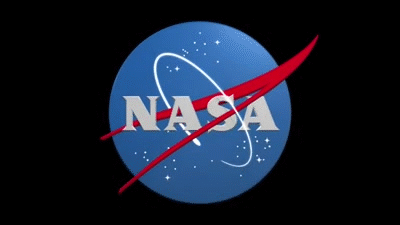space-m17-blog
I love space. I've been to space camp in Huntsville Alabama and I am planning on going every summer. I look forward to be an astronaut for nasa on the sls that is planned to be launched 2018. And the manned mission 2030. So yeah I won't let anything get in my way.
138 posts
Latest Posts by space-m17-blog
The true sign of intelligence is not knowledge but imagination.
Albert Einstein (via alberteinsteinquotes)

http://angelwolf92.deviantart.com/










An Adaptable Species: Part 1 of 4 Episode 11: The Immortals, Cosmos: A SpaceTime Odyssey


The Laniakea Supercluster (Laniakea; also called Local Supercluster or Local SCl) is the galaxy supercluster that is home to the Milky Way, our galaxy, and therefore to the Solar System and the Earth.

(12 Nov. 1966) — Astronaut James A. Lovell is photographed inside his Gemini spacecraft during the Gemini-12 mission. Astronaut Edwin Aldrin is seen in the background and to the left. Photo credit: NASA

Pluto in Enhanced Color : Pluto is more colorful than we can see. Color data and images of our Solar System’s most famous dwarf planet, taken by the robotic New Horizons spacecraft during its flyby in July, have been digitally combined to give an enhanced view of this ancient world sporting an unexpectedly young surface. The featured enhanced color image is not only esthetically pretty but scientifically useful, making surface regions of differing chemical composition visually distinct. For example, the light-colored heart-shaped Tombaugh Regio on the lower right is clearly shown here to be divisible into two regions that are geologically different, with the leftmost lobe Sputnik Planum also appearing unusually smooth. New Horizons now continues on beyond Pluto, will continue to beam back more images and data, and will soon be directed to change course so that it can fly past asteroid 2014 MU69 in 2019 January. via NASA
js




20 Awesome Things for Your Home if You Love Space
Add a bit of space in everyday life by using the interior, which will carry you into the space of distant planets, galaxies, asteroids and constellations. Read also: 22 Simple Ideas to Make Your Home Cozier and 12 Simple Ideas How to Make Your Home Cozier Artnaz.com gathered for you in this post… — http://artnaz.com/space-things/

Robonaut at JSC. nasa

★★★★★
#moonphoto #fullmoon #beautiful #moon #moonshot #nature #skyphotography #instagram #igersoftheday #igers #nightskyphotography #photo #nightphotography #moon_awards #moonlight #photography #skiesphotography #astronomy #moon_awards_bnw #wilderness #photographie #hometown #sky #naturephotography #space #photograph #night #skyporn #moonphotography #scotlandpotography (em Lisbon, Portugal)
Astronomy is important because it tells us how big is the universe and how it spreads even more and when we understand that infinite distances we will learn to love and appreciate what is closest to us
My astronomy teacher, Slobodan Spremo (via amsterdam-obsessed)

Andromeda Rising over the Alps : Have you ever seen the Andromeda galaxy? Although M31 appears as a faint and fuzzy blob to the unaided eye, the light you see will be over two million years old, making it likely the oldest light you ever will see directly. Now rising near a few hours after sunset from mid-latitude northern locations, Andromeda is rising earlier each night and will be visible to northerners all night long starting in September. The featured image captured Andromeda rising above the Italian Alps last month. As cool as it may be to see this neighboring galaxy to our Milky Way with your own eyes, long duration camera exposures can pick up many faint and breathtaking details. Recent data indicates that our Milky Way Galaxy will collide and coalesce with the slightly larger Andromeda galaxy in a few billion years. via NASA
js


Cosmic lighthouse known as the Egg Nebula, which lies around 3000 light-years from Earth. The image, taken with the NASA/ESA Hubble Space Telescope, has captured a brief but dramatic phase in the life of a Sun-like star.
js

Hubble Peers into the Heart of a Galactic Maelstrom
This NASA/ESA Hubble Space Telescope image shows Messier 96, a spiral galaxy just over 35 million light-years away in the constellation of Leo (The Lion). It is the nearest group containing both bright spirals and a bright elliptical galaxy (Messier 105).
September 04, 2015
Sea Level Rise

For thousands of years, sea level has remained relatively stable. But now, Earth’s seas are rising. Since the beginning of the 20th century, they have risen about eight inches, and more than two inches in the last 20 years alone!

As water warms, it expands and takes up more space. That means that when oceans warm, the sea level rises. This summer, we’ve been researching exactly how global warming has impacted Greenland’s ice sheet. Our ICESat-2 mission will use a laser to measure the height of the planet’s surface. Over time, we will be able to provide a record of elevation change, and estimate how much water has melted into the ocean from land ice change.
So how much ice are we actually losing? Great question, but the answer might shock you. In Greenland alone, 303 gigatons of ice was lost in 2014!

Since we know that ice is melting, we’re working to gain a better understanding of how much and how fast. We’re using everything from planes, probes and boats, to satellites and lasers to determine the impact of global warming on the Earth’s ice.

Follow along for updates and information: http://climate.nasa.gov/
The NASA “Worm” Logo
Just like many organizations, the style and logos can change over time. You are probably most familiar with our “meatball” logo. No, unfortunately this does not refer to the delicious food. This logo (below) is our most popular symbol, and dates back to 1959.

But, we’ve also had other insignia that represented our organization throughout the years.
The “worm” logo (below) was used by the agency from 1975 until 1992. The organization wanted to create a more “modern” logo, which resulted in the unique type style of the “worm” logo.

Even though this logo was retired in 1992, the Graphics Standards Manual is still available online HERE.
You can also read up about the emblems, logos and insignia used by NASA throughout the years in a new e-Book available for free HERE.
Make sure to follow us on Tumblr for your regular dose of space:http://nasa.tumblr.com

A photo of Jupiter. Took by Cassini with COISS on April 02, 2001 at 15:22:15. Detail page on OPUS database.
Ever wonder about what lies between the stars? Learn all about the interstellar medium in this short video! Follow Evant Horizon for more astronomy posts!
The interstellar medium is the gas and dust between stars. Of its mass, this gas is composed of mainly hydrogen and helium with a touch of heavier elements. Highly dense regions of the ISM known as molecular clouds are directly responsible for the formation of stars.
New video! Spiral galaxies in a nutshell!

js

A galactic sunflower






Illustration by Jean Luc Beghin for the 1970 edition of Spirou.
The top-right text says the image doesn’t depict any particular moment during the Apollo missions but that the two astronauts were picked arbitrarily: Frank Borman, commander of Apollo VIII (the first mission to fly around the moon) and Neil Armstrong, commander of Apollo XI (and the first person to walk on the moon).
I cleaned this image up a bit and the source-file can be found here, as well as other high definition scientific illustrations.

Apollo 7 roars upward to space from Cape Canaveral, October 11, 1968.










New video on Irregular Galaxies! Enjoy!
New Video! Reflection nebulae in a nutshell! Follow Evant Horizon for more astronomy posts!
New video! Dark nebulae in a nutshell!
Follow Evanthorizon for more astronomy posts!